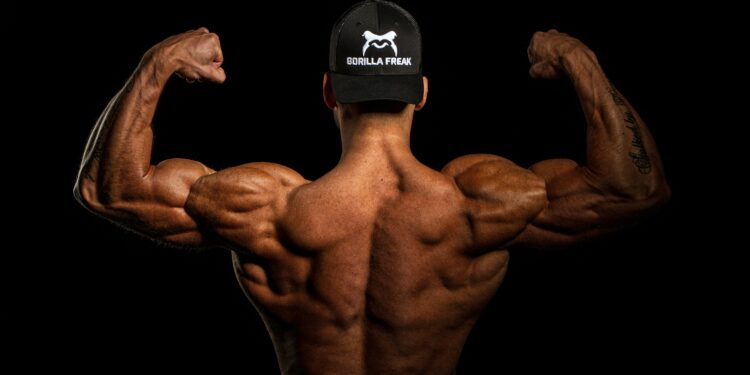11 Shoulder Workout Gym Tips for Stronger Deltoids

For anyone dedicated to sculpting impressive shoulders, a focused shoulder workout gym routine is essential. Strong deltoids not only enhance your physique but also improve functional movement and prevent injury
Strong deltoids play a vital role in shoulder joint stability and can significantly reduce the risk of injury during everyday activities and other exercises.
This guide provides 11 actionable tips to maximize your efforts during each shoulder workout gym session and achieve significant shoulder growth. We’ll cover everything from the foundational exercises you should prioritize to the critical importance of proper form and strategic exercise selection.
Mastering the Foundation – Exercise Selection & Compound Movements
To build a strong and impressive set of shoulders through your shoulder workout gym sessions, you need a solid foundation in exercise selection.
Focusing on the right movements during your gym time will provide the most significant gains and lay the groundwork for long-term growth.
Tip 1: Prioritize Compound Exercises
Think of compound exercises as your shoulder-building workhorses. Movements like the overhead press (whether with a barbell or dumbbells) and the push press engage multiple muscle groups simultaneously, allowing you to lift heavier weights and stimulate overall shoulder development effectively.
These exercises work all three heads of the deltoid (anterior, lateral, and posterior) along with supporting muscles like the traps and triceps. Make these a staple in your shoulder routine.
Tip 2: Include Isolation Exercises
While compound movements build overall mass and strength, isolation exercises are essential for specifically targeting each of the three deltoid heads.
To achieve well-rounded shoulders, incorporate exercises like lateral raises (for the lateral deltoid, adding width), front raises (for the anterior deltoid, contributing to front thickness), and rear delt flyes (for the posterior deltoid, crucial for a complete and balanced look).
Don’t neglect these targeted movements to ensure all aspects of your shoulders are being developed.
Tip 3: Variety is Key
Just like any other muscle group, your shoulders will adapt to the same exercises over time within your shoulder workout gym sessions, potentially leading to plateaus.
To keep stimulating growth and hit the deltoids from slightly different angles during your gym sessions, it’s important to incorporate variations. This variety will challenge your muscles in new ways and promote more comprehensive development.
Perfecting Your Form – The Cornerstone of Growth & Safety
Lifting heavy weights is tempting, but it means nothing if your form is compromised. Proper form during every shoulder workout gym session is absolutely crucial for maximizing muscle engagement and, more importantly, preventing potentially debilitating shoulder injuries.
Tip 4: Focus on Controlled Movements
Leave the jerky, momentum-driven reps at the door. Instead, concentrate on slow, controlled movements throughout the entire range of motion. During the concentric (lifting) phase, focus on contracting the target muscles. During the eccentric (lowering) phase, resist the weight and control its descent.
This controlled approach in your shoulder workout gym routine ensures your deltoids are doing the work, not momentum, leading to better muscle growth and reduced risk of injury.
Tip 5: Mind the Scapular Movement
When performing your shoulder workout gym routine, remember that the shoulder joint is intricately connected to the scapula (shoulder blade). Understanding and controlling scapular movement is vital for effective and safe shoulder exercises. For pressing movements, ensure your scapulae are stable and move naturally with the weight.
For lateral and front raises, avoid shrugging; focus on isolating the deltoid. For rear delt flyes, think about squeezing your shoulder blades together at the peak of the movement.
Proper scapular control allows for optimal muscle activation and protects the shoulder joint from unnecessary stress.
Tip 6: Avoid Ego Lifting
It’s easy to get caught up in trying to lift the heaviest weight possible, but “ego lifting” – using weight that far exceeds your ability to maintain proper form – is a recipe for injury and often results in less effective muscle stimulation.
Leave your ego at the door. Focus on using a weight that allows you to perform the exercise with good form for the targeted rep range. Prioritize quality over quantity (of weight) for long-term, sustainable progress and a healthy set of shoulders.
Strategic Progression & Intensity – Challenging Your Deltoids to Grow
Once you’ve mastered the foundational exercises and nailed your form, the next step is to strategically challenge your deltoids to stimulate continued growth. This involves gradually increasing the demands placed on your muscles over time.
Tip 7: Progressive Overload
This is the cornerstone of long-term muscle growth. Progressive overload simply means gradually increasing the stress you place on your muscles as they adapt.
This can be achieved in several ways: increasing the weight you lift, performing more repetitions with the same weight, adding more sets to your workout, decreasing rest times between sets, or improving your exercise technique. Consistently finding ways to challenge your shoulders beyond what they’re accustomed to is crucial for continued progress.
Tip 8: Implement Intensity Techniques
To push past plateaus and further stimulate muscle growth, consider incorporating intensity techniques strategically into your shoulder workouts.
Techniques like drop sets (immediately reducing the weight after reaching failure and performing more reps), supersets (performing two exercises back-to-back with minimal rest), and rest-pause sets (taking short breaks during a set to squeeze out a few extra reps) can increase the overall intensity and volume of your training.
However, use these techniques judiciously during your shoulder workout gym sessions, as they can be taxing on your body.
Tip 9: Listen to Your Body
While pushing yourself is necessary for growth, it’s equally important to differentiate between muscle fatigue and genuine pain. Sharp or persistent pain is a signal to stop and assess. Don’t be afraid to adjust your workouts based on how your shoulders are feeling.
Overtraining can hinder progress and increase the risk of injury. Pay attention to signals of fatigue, allow for adequate recovery, and don’t push through pain.
The Often-Overlooked Essentials – Recovery & Nutrition
Your efforts in the gym are only one part of the equation for building stronger deltoids. Recovery and nutrition play equally vital roles as every shoulder workout gym session in allowing your muscles to repair and grow.
Tip 10: Prioritize Recovery
Muscle growth doesn’t happen while you’re lifting weights; it occurs during rest and recovery. Ensure adequate sleep (aim for 7-9 hours per night) to allow your body to repair muscle tissue.
Incorporate active recovery methods like light cardio or stretching on your off days to improve blood flow and reduce muscle soreness. Don’t underestimate the power of rest in maximizing your gains.
Tip 11: Fuel Your Gains
Your diet provides the building blocks for muscle growth and repair. Ensure you’re consuming a balanced diet with sufficient protein, as protein is essential for muscle protein synthesis. Aim for around 0.8-1 gram of protein per pound of body weight.
Additionally, don’t neglect carbohydrates for energy to power your workouts and healthy fats for overall hormonal balance and recovery. Proper nutrition provides the fuel and building blocks for your shoulder workout gym plan.
Stay Consistent and Patient with Sculpting Your Ideal Shoulders
Building strong, well-defined shoulders takes time, dedication, and, most importantly, consistency. By implementing these 11 tips into your shoulder workout gym routine, you’ll be well on your way to sculpting the powerful deltoids you desire.
Remember that patience is key; muscle growth is a gradual process. Stay consistent with your training, listen to your body, and celebrate the progress you make along the way. Your journey to boulder shoulders is a marathon, not a sprint, so embrace the process and enjoy the gains!
Next Read: The Ultimate Guide to the Best Shoes for Running in 2025







